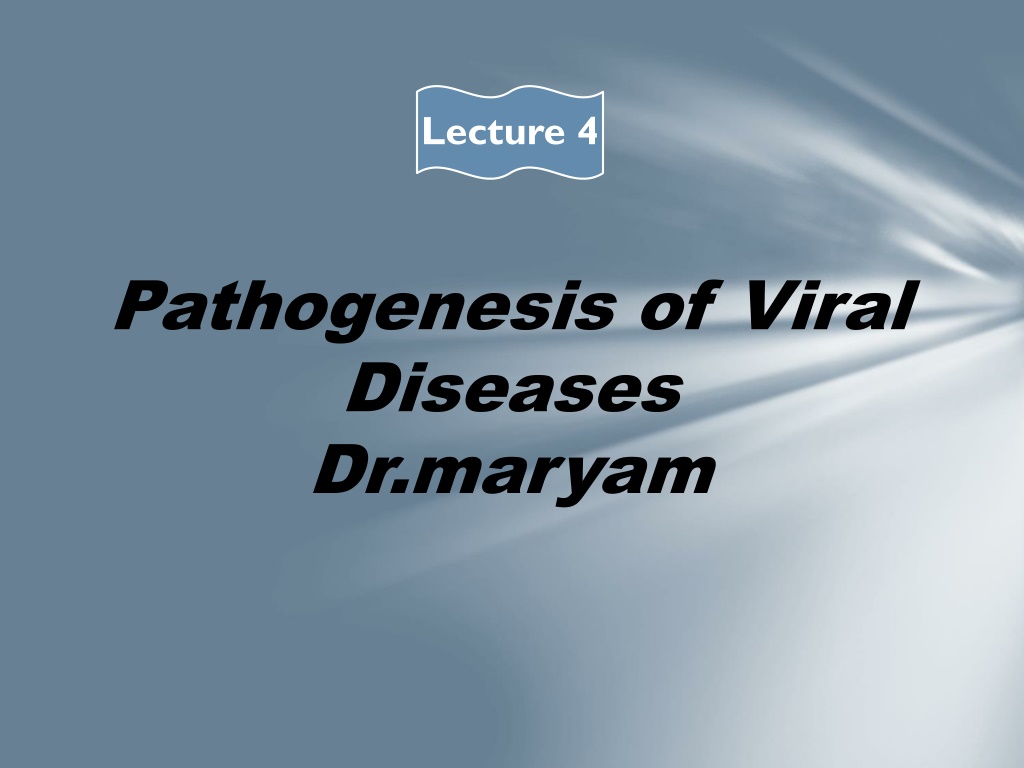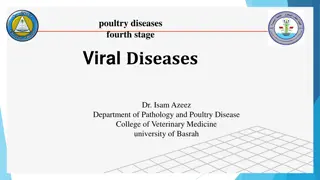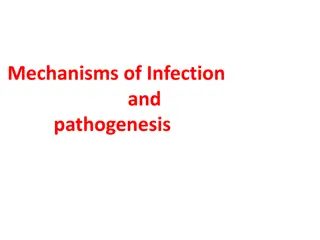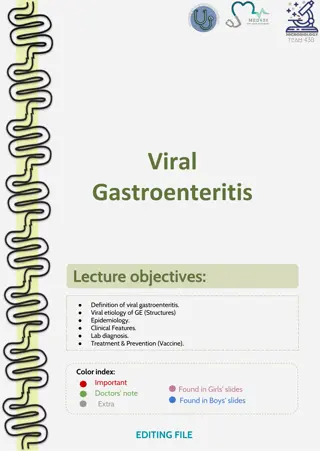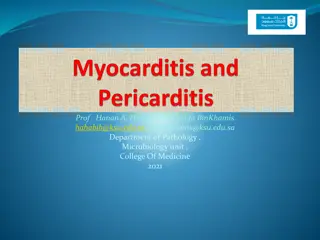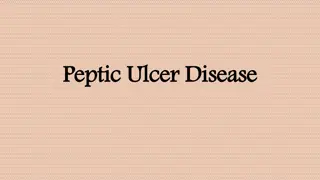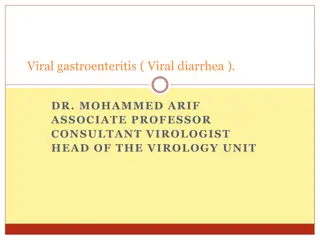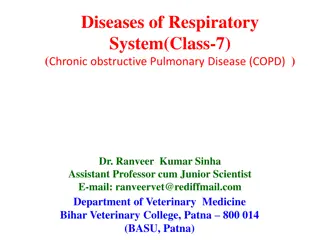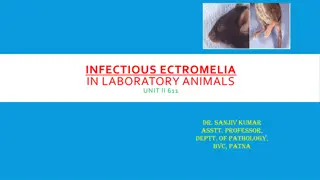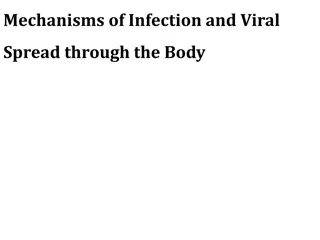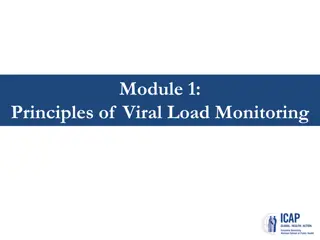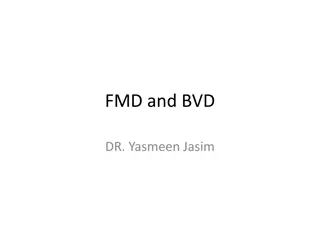Understanding Viral Pathogenesis: Insights into Disease Development
Viral pathogenesis explores the intricate relationship between viruses and their hosts, encompassing factors like viral effects on cells, entry mechanisms, tissue tropism, immune responses, and the outcomes of infection. This process involves a series of interactions leading to either virus clearance or persistence, with potential consequences ranging from cellular damage to latent infections or even cell transformation. Explore the complexities of how viruses cause diseases and the various scenarios in virus-host cell interactions.
Download Presentation

Please find below an Image/Link to download the presentation.
The content on the website is provided AS IS for your information and personal use only. It may not be sold, licensed, or shared on other websites without obtaining consent from the author. Download presentation by click this link. If you encounter any issues during the download, it is possible that the publisher has removed the file from their server.
E N D
Presentation Transcript
Lecture 4 Pathogenesis of Viral Diseases Dr.maryam
Viral Pathogenesis Viral pathogenesis is the process by which a viral infection leads to disease. Viral pathogenesis is an abnormal situation of no value to the virus. The majority of viral infections are subclinical. It is not in the interest of the virus to severely harm or kill the host. The consequences of viral infections depend on the interplay between a number of viral and host factors.
Viral pathogenesis deals with the interaction between a virus and its host. Included within the scope of pathogenesis are the stepwise progression of infection from virus entry through dissemination to shedding, the defensive responses of the host and the mechanisms of virus clearance or persistence. Pathogenesis also encompasses the disease processes that result from infection, variations in viral pathogenicity and the genetic basis of host resistance to infection or disease.
Factors in Viral Pathogenesis Effects of viral infection on cells (Cellular Pathogenesis) Entry into the Host Course of Infection (Primary Replication, Systemic Spread, Secondary Replication) Cell/Tissue Tropism Cell/Tissue Damage Host Immune Response Virus Clearance or Persistence
CONSEQUENCES OF VIRUS INFECTION Normal HeLa cell culture CYTOPATHOGENIC EFFECT Morphological changes degenerative- lysis, necrosis, inclusion bodies ,vacuoles, syncitia
Cytopathic Effect Syncytium formation in cell culture caused by RSV (top), measles (bottom). and virus
neuron Negri bodies Negri bodies Immunohistochemical staining of intra-cytoplasmic viral inclusions in the neuron of a human rabies patient
Virus-host cell interactions Four main scenarios 1. Multiplication of the virus and destruction of the host cell 2. Elimination of the virus from the cell and infection aborted without any recognizable effect on the cells 3. Survival of the infected cell in an unchanged state but it continues to carry the virus in a latent state 4. Survival of the infected cell in a dramatically altered or transformed state eg transformation of a normal cell to one having the properties of a cancerous cell
Cellular Pathogenesis Cells can respond to viral infections in 3 ways: (1) No apparent change , (2) Death, and (3) Transformation Direct cell damage and death from viral infection may result from diversion of the cell's energy shutoff of cell macromolecular synthesis competition of viral mRNA for cellular ribosome competition of viral promoters and transcriptional enhancers for cellular transcriptional factors such as RNA polymerases, and inhibition of the interferon defense mechanisms. Indirect cell damage can result from integration of the viral genome induction of mutations in the host genome inflammation host immune response.
More than 300 viruses are known to infect humans and to cause as many as 50 different syndromes. Steps in Viral Pathogenesis A- Viral entry and primary replication. B- Viral Spread and Cell Tropism. C- Cell Injury and Clinical Illness. D- Recovery From Infection. E- Virus Shedding.
Entry Mucous membranes or skin Respiratory Oral Sexual Ocular Percutaneous needles, wounds, bites
modes of transmissions 1) Horizontal transmission: Transmission between person of any age after birth, usually excluding via the maternal milk.
2) Vertical transmission: Spread of infection parent to the young via the placenta or genital tract. Transmission via the maternal milk is sometime included.
Tests for teratogenic diseases in pregnant & newborns T Toxoplasma () O other viruses Hepatitis B, Varicella R Rubella C Cytomegalovirus H Herpes Simplex virus
Localization or tropism One of the salient features that distinguishes viruses is their localization within the animal host The names of individual viral diseases often reflect the organs or tissues that are involved - glandular fever - hepatitis Localization of infection, or viral tropism, is regulated both by viral dissemination and by cellular susceptibility
Course of Viral Infection Primary Replication The place of primary replication is where the virus replicates after gaining initial entry into the host. This frequently determines whether the infection will be localized at the site of entry or spread to become a systemic infection. Systemic Spread Apart from direct cell-to-cell contact, the virus may spread via the blood stream and the CNS. Secondary Replication Secondary replication takes place at susceptible organs/tissues following systemic spread.
Cycle of infection Entry Shedding Primary site Local Lymphatic Neuronal Blood (viremia) Spread Secondary sites Shedding
Shedding Acute viral infections are characterized by brief periods of intensive virus shedding into respiratory aerosols, feces, urine or other bodily secretions or fluids .Shedding may occur in the gastrointestinal and respiratory tracts, skin, mucous membranes, oral and genital fluids, semen and milk, blood and urine Persistent viruses are often shed at relatively low titers, but this may be adequate for transmission over the prolonged duration of infection
Routes of entry and shedding Portals of entry of viruses into the host, and sites of shedding from the host.
Thank you Thank you
